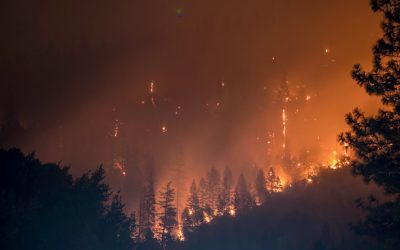Explore the World Through Geography, Natural Resources & Daily History
Clear, reliable and engaging guides that help you understand our planet — from UK geography education to global natural resources and On This Day history events.
Explore, discover, and learn about the wonders of our world! At Earth Site, we’re passionate about bringing geography, history, and science to life for curious minds of all ages. Whether you’re delving into historical events, uncovering the mysteries of the natural world, or seeking interactive resources, you’re in the right place.
Here, you can uncover the stories behind historical events, explore the natural wonders of our planet, and gain valuable insights into how the Earth’s systems shape our daily lives. From the towering peaks of mountain ranges to the far-reaching impacts of human innovation, we aim to make every topic both engaging and informative.
Start your journey of discovery with us today, and let’s make learning an adventure!
What We Cover
Earth Site brings together engaging and accessible educational content designed to help you understand the world, its history, and its natural systems.
🌍 Geography Education (UK & Worldwide)
We publish clear, easy-to-understand geography resources for students, teachers and curious learners. Our guides support geography education in the UK and cover physical geography, climate, ecosystems, population, and global development.
⛏️ Natural Resources & Environmental Geography
Explore detailed country profiles covering natural resources, mining, energy, geology and global environmental challenges. We show how nations manage minerals, water, land and ecosystems, and why these resources matter.
📅 On This Day in History
Every day has a story. Our On This Day history series features major events, anniversaries, traditions, and cultural milestones from around the world — with timelines, context, and fun facts.
TIMELINE
Deforestation and afforestation
Forests play a crucial role in maintaining the ecological balance of the planet. They are home to a diverse range of flora and fauna, many of which are not found anywhere else on Earth. Forests also provide essential ecosystem services such as carbon sequestration, oxygen production, and water regulation. Additionally, they are a source of livelihood for millions of people around the world, providing timber, non-timber forest products, and employment opportunities. Furthermore, forests are vital for mitigating climate change as they act as carbon sinks, absorbing carbon dioxide from the atmosphere. Without forests, the Earth’s climate would be significantly altered, leading to more extreme weather patterns and a rise in global temperatures. Moreover, forests are essential for maintaining soil fertility and preventing erosion. The roots of trees help to bind the soil together, reducing the risk of landslides and desertification. Forests also play a crucial role in maintaining water cycles, as they help to regulate the flow of rivers and streams. In addition to their environmental importance, forests also have significant cultural and spiritual value for many communities around the world. They are often considered sacred and are integral to traditional practices and beliefs. Overall, forests are a fundamental part of the Earth’s ecosystem and are essential for the well-being of both the planet and its inhabitants. Summary Forests are crucial for maintaining biodiversity, regulating climate, and providing essential resources for human survival. Deforestation is primarily caused by agricultural expansion, logging, and urbanization, leading to soil erosion, loss of habitat, and climate change. Efforts to combat deforestation include sustainable forest management, reforestation, and implementing policies to protect and conserve...
Climate resilience in urban planning
Climate resilience in urban planning refers to a city’s capacity to withstand and recover from the effects of climate change, including extreme weather events, rising sea levels and increased temperatures. It involves designing and developing cities to minimise vulnerability to these impacts and ensure long-term sustainability of urban areas. This concept encompasses a wide range of strategies, including infrastructure improvements, land use planning and community engagement, all aimed at creating cities better equipped to adapt to and mitigate the effects of climate change. Climate resilience in urban planning also involves considering the social, economic and environmental aspects of a city, as well as the interconnectedness of these factors. By understanding the concept of climate resilience in urban planning, city planners can work towards creating more sustainable and adaptable cities that can thrive in the face of a changing climate. Climate resilience in urban planning is a complex and multifaceted concept that requires a holistic approach to city development. It involves not only physical infrastructure improvements, but also social and economic considerations that can help communities adapt to and recover from the impacts of climate change. This concept also requires a long-term perspective, as cities must be designed and developed with future climate conditions in mind. By understanding the concept of climate resilience in urban planning, city planners can work towards creating cities that are better prepared for the challenges of a changing climate. This includes considering factors such as green infrastructure, sustainable building design and community-based adaptation strategies, all of which can contribute to the overall resilience of a city. Summary Climate resilience in urban planning involves designing cities...
Renewable energy sources (solar, wind, geothermal)
Solar energy is a renewable and sustainable power source that offers numerous benefits to both the environment and consumers. One of the key advantages of solar energy is its ability to reduce electricity bills. By harnessing the sun’s power, homeowners and businesses can generate their own electricity, thereby reducing their reliance on traditional utility companies. This not only leads to cost savings but also provides a sense of energy independence. Moreover, solar energy is a clean and green source of power that helps to reduce carbon emissions and combat climate change. Unlike fossil fuels, solar power does not produce harmful pollutants or greenhouse gases, making it an environmentally friendly choice. Additionally, solar panels require minimal maintenance and have a long lifespan, making them a reliable and cost-effective investment for the long term. Summary Solar energy is a sustainable and renewable source of power that can reduce electricity bills and carbon emissions. Wind power is a clean and abundant energy source that can be harnessed to generate electricity and create jobs. Geothermal energy is a reliable and constant source of power that can be used for heating, cooling, and electricity generation. Renewable energy sources have a lower environmental impact compared to traditional fossil fuels, reducing air and water pollution. The future of renewable energy looks promising with advancements in technology and increasing global adoption, leading to a more sustainable and greener world. Challenges in implementing renewable energy include high initial costs, intermittency, and the need for infrastructure upgrades. Government incentives such as tax credits and subsidies can encourage the adoption of renewable energy and help overcome financial barriers. Harnessing the...
Carbon emissions reduction
Carbon emissions reduction is of paramount importance in the fight against climate change and its devastating effects on the planet. Carbon emissions, primarily in the form of carbon dioxide (CO2), are released into the atmosphere through human activities such as burning fossil fuels for energy, transport, and industrial processes. These emissions contribute to the greenhouse effect, trapping heat in the Earth’s atmosphere and leading to global warming. The consequences of unchecked carbon emissions are far-reaching and include rising sea levels, extreme weather events, loss of biodiversity, and disruptions to ecosystems. Therefore, reducing carbon emissions is crucial in mitigating these impacts and preserving the planet for future generations. Furthermore, carbon emissions reduction is essential for achieving international climate targets and commitments. The Paris Agreement, signed by 195 countries in 2015, aims to limit global warming to well below 2 degrees Celsius above pre-industrial levels, with efforts to limit the temperature increase to 1.5 degrees Celsius. To achieve these goals, significant reductions in carbon emissions are necessary. Failing to do so would result in irreversible damage to the environment and exacerbate the already dire consequences of climate change. Therefore, it is imperative for governments, industries, and individuals to take concerted action to reduce carbon emissions and transition towards a low-carbon economy. Summary Carbon emissions reduction is crucial for mitigating climate change and protecting the environment for future generations. Strategies for decreasing carbon emissions include promoting energy efficiency, transitioning to renewable energy sources, and implementing carbon pricing mechanisms. Renewable energy plays a vital role in carbon emissions reduction by providing clean and sustainable alternatives to fossil fuels. Carbon emissions have a significant...
Political Boundaries of Pakistan: Provinces, Districts, or Historical Boundaries.
Pakistan, a South Asian nation, shares borders with India to the east, Afghanistan and Iran to the west, and China to the north. The Arabian Sea lies to the south of Pakistan. The political boundaries of Pakistan have evolved over time, influenced by historical events, colonial legacies and geopolitical factors. The country’s borders have been a source of dispute and conflict, with contentious territories such as Kashmir and the Durand Line. The demarcation of political boundaries has significant implications for governance, administration and national identity in Pakistan. The political boundaries of Pakistan are defined by the internationally recognised borders with its neighbouring countries. These boundaries are vital for maintaining territorial integrity and sovereignty. The delineation of these borders has been a source of both stability and conflict, as evidenced by the Line of Control in Kashmir. The political boundaries also encompass the internal administrative divisions within Pakistan, including provinces, territories and tribal areas. These internal boundaries play a crucial role in the distribution of resources, representation and governance within the country. Understanding the complexities and significance of Pakistan’s political boundaries is essential for comprehending the country’s historical, political and social dynamics. Summary Pakistan’s political boundaries are defined by its borders with India, Afghanistan, Iran, and China, as well as the Arabian Sea to the south. The country is divided into four provinces – Punjab, Sindh, Khyber Pakhtunkhwa, and Balochistan – and two autonomous territories, Azad Jammu and Kashmir and Gilgit-Baltistan. The historical boundaries of Pakistan have evolved over time, including the partition of British India in 1947 and the secession of East Pakistan (now Bangladesh) in 1971. Challenges and...
Climate Zones of Pakistan: Different Climate Regions Of Pakistan
Pakistan is a diverse country with a wide range of climate zones, each possessing distinct characteristics and environmental challenges. The nation’s climate can be broadly categorised into tropical, arid and semi-arid, temperate, alpine and sub-alpine, and coastal regions. These climate zones are influenced by various factors, including the country’s geographical location, topography, and proximity to the Arabian Sea and the Himalayas. Understanding the different climate zones of Pakistan is crucial for addressing environmental issues, managing natural resources, and developing sustainable policies for the future. The diverse climate zones of Pakistan have a significant impact on the country’s agriculture, water resources, and overall environmental sustainability. From the hot and humid coastal regions to the cold and snowy alpine areas, each climate zone presents its own set of challenges and opportunities. As the effects of climate change become more pronounced, it is essential to understand how these changes will impact Pakistan’s climate zones and what measures can be taken to mitigate their effects. By examining each climate zone in detail, one can gain a better understanding of the unique environmental conditions and challenges facing Pakistan. Summary Pakistan has a diverse range of climate zones, influenced by its geography and topography. The tropical climate regions in Pakistan are characterized by high temperatures and heavy rainfall, particularly in the monsoon season. The arid and semi-arid climate regions in Pakistan experience low rainfall and high temperatures, leading to desertification in some areas. The temperate climate regions in Pakistan have moderate temperatures and distinct seasons, making them suitable for agriculture. The alpine and sub-alpine climate regions in Pakistan are characterized by cold temperatures and snowfall,...
Terrain and Topography of Pakistan: mountains, valleys, and plains.
Pakistan, situated in South Asia, shares borders with India to the east, Afghanistan and Iran to the west, and China to the north. The nation’s varied terrain and topography render it a region of remarkable natural splendour and geological importance. Spanning from the lofty summits of the Himalayas in the north to the expansive plains of the Indus River Valley in the south, Pakistan‘s landscape serves as a testament to the natural forces that have moulded it over millions of years. The country’s terrain and topography have been instrumental in shaping its climate, economy, and culture, making it a compelling subject of study for geographers, geologists, and nature enthusiasts alike. Summary Pakistan’s terrain and topography are incredibly diverse, ranging from majestic mountains to vast plains. The mountains of Pakistan, including the famous Karakoram and Himalayas, offer breathtaking landscapes and challenging trekking opportunities. The valleys of Pakistan, such as Swat Valley and Hunza Valley, are known for their natural beauty and unique cultural heritage. The vast plains of Pakistan, including the fertile Punjab region, are crucial for agriculture and contribute significantly to the country’s economy. The diverse terrain and topography of Pakistan have a significant impact on the country’s climate, influencing temperature, precipitation, and weather patterns. The Majestic Mountains of Pakistan The Himalayas: A Sight to Behold These mountains are not only a breathtaking sight but also play a crucial role in shaping Pakistan’s climate and providing a habitat for a diverse range of flora and fauna. The Karakoram Range: A Treasure Trove of Peaks The Karakoram Range, which is home to some of the world’s highest peaks, including K2...
History of Pakistan
The region of Pakistan boasts a rich and diverse history, with evidence of human habitation dating back to the Palaeolithic era. The ancient civilisations that flourished in this region include the Indus Valley Civilisation, one of the world’s oldest urban societies. The Indus Valley Civilisation, also known as the Harappan Civilisation, existed from approximately 3300 BCE to 1300 BCE and was located in what is now modern-day Pakistan and northwest India. The civilisation was renowned for its advanced urban planning, sophisticated drainage systems, and intricate pottery and jewellery. The cities of Mohenjo-Daro and Harappa are two of the most well-known sites from this ancient civilisation, and they provide valuable insights into the social, economic, and cultural aspects of the time. Moreover, the region of Pakistan has also been influenced by other ancient civilisations, such as the Persian Empire, the Maurya Empire, and the Gupta Empire. These empires left their mark on the region through trade, cultural exchange, and the spread of religious beliefs. The region was also a significant part of the Silk Road, an ancient network of trade routes that connected the East and West, further contributing to its cultural and economic significance. The ancient history of Pakistan is a testament to the region’s importance in shaping the development of human civilisation and its enduring legacy in the modern world. Summary Ancient civilizations in the region of Pakistan include the Indus Valley Civilization, which was one of the world’s earliest urban societies. The Islamic conquest and the Mughal Empire played a significant role in shaping the culture and history of the region, leaving behind architectural marvels and a...
Population Density of Pakistan
Population density refers to the number of people living per unit of area, typically per square kilometre or square mile. It is a crucial demographic indicator that aids in understanding the distribution of people within a given area. In Pakistan, population density varies significantly across different regions, with some areas being densely populated whilst others are sparsely populated. Understanding population density is vital for policymakers, urban planners, and researchers as it provides insights into the social, economic, and environmental dynamics of a region. Pakistan is the sixth most populous country in the world, with a population exceeding 220 million people. The country’s population is growing at a rapid rate, and this growth has significant implications for its population density. As the population continues to increase, it places pressure on resources, infrastructure, and the environment. Therefore, understanding the factors affecting population density in Pakistan, as well as its impact on urban and rural areas, is essential for sustainable development and effective policymaking. Summary Population density refers to the number of people living per square kilometre and is a key indicator of the distribution of population in a specific area. Factors affecting population density in Pakistan include geographical features, economic opportunities, and government policies. Urban areas in Pakistan have higher population density compared to rural areas due to better job opportunities and access to amenities. High population density puts pressure on infrastructure and resources, leading to challenges such as inadequate housing and water scarcity, but also presents opportunities for economic growth and innovation. Government policies and initiatives to manage population density in Pakistan should focus on urban planning, improving access to...
Natural Resources of Pakistan: Where Natural Resources are Located in Pakistan
Pakistan possesses a diverse array of natural resources that are integral to the nation’s economy and development. These resources encompass minerals, agriculture, energy, water and forests. The country’s strategic geographical position has bestowed upon it a variety of mineral deposits, fertile arable land, plentiful water resources and a rich diversity of flora and fauna. The exploitation and conservation of these natural resources are paramount for sustainable development and the welfare of Pakistan‘s populace. The natural resources of Pakistan have the potential to make a substantial contribution to the country’s economy. However, the sustainable management and preservation of these resources are crucial to ensure their availability for future generations. The Pakistani government has implemented various initiatives to promote the sustainable utilisation of natural resources and address the challenges associated with their exploitation. This article shall examine the mineral, agricultural, energy, water and forest resources of Pakistan, as well as the challenges and conservation efforts related to these resources. Summary Pakistan is rich in natural resources, including minerals, agriculture, energy, water, and forests. The mineral resources in Pakistan include coal, salt, gypsum, limestone, and iron ore, among others. Pakistan’s agricultural resources are diverse, with the country being a major producer of wheat, rice, cotton, and sugarcane. Energy resources in Pakistan include natural gas, coal, and hydropower, with a growing focus on renewable energy sources. Water resources in Pakistan are crucial for agriculture and energy production, but the country faces challenges such as water scarcity and pollution. Mineral Resources in Pakistan Significance of Mineral Resources The mining and quarrying sector in Pakistan contributes significantly to the country’s economy and provides employment opportunities...
Cultural or Historical Sites of Pakistan: Important Cultural Landmarks or Historical Sites In Pakistan
Pakistan boasts a rich cultural and historical heritage, with numerous sites showcasing its diverse and vibrant past. From ancient ruins to grand mosques, imposing forts and splendid gardens, Pakistan‘s cultural and historical landmarks offer insight into the country’s extensive history and the influences that have shaped its identity. These sites stand as a testament to Pakistan’s historical significance, serving as a source of national pride and attracting tourists from across the globe. The cultural and historical sites in Pakistan reflect the nation’s multifaceted heritage, bearing influences from various civilisations and cultures that have left their imprint on the land. From the ancient Indus Valley civilisation to the Mughal Empire and beyond, Pakistan’s historical sites provide a captivating journey through time, illustrating the country’s evolution and its people’s contributions to world history. The ancient ruins of Mohenjo-daro, the magnificent Badshahi Mosque in Lahore, and the grand forts and gardens scattered throughout the landscape each recount a unique narrative, contributing to the rich tapestry of Pakistan’s cultural and historical legacy. Summary Pakistan is home to a rich tapestry of cultural and historical sites that date back thousands of years. The ancient ruins of Mohenjo-Daro offer a fascinating glimpse into one of the world’s earliest urban settlements. The Badshahi Mosque in Lahore is a stunning example of Mughal architecture and a symbol of the city’s rich cultural heritage. Lahore Fort and Rohtas Fort are grand structures that showcase the military prowess and architectural splendour of their respective eras. The Shalimar Gardens in Lahore are a testament to the Mughal love for nature and beauty, with their intricate design and serene atmosphere. The...
Climate Zones of Oman: Different climate regions Of Oman
Oman, situated on the south-eastern coast of the Arabian Peninsula, is a nation renowned for its diverse and varied climate zones. The country’s distinctive geography, which encompasses coastal regions, deserts, mountains and oases, contributes to the wide array of climates found within its borders. Comprehending the different climate zones of Oman is crucial for anyone intending to visit or conduct business in the country, as it can significantly influence travel arrangements, outdoor pursuits and even agricultural practices. From the hot and humid coastal areas to the arid and dry desert regions, Oman’s climate zones provide a captivating insight into the natural diversity of the nation. Summary Oman has diverse climate zones including coastal, desert, mountain, oasis, and semi-arid regions. The coastal climate of Oman is characterized by high humidity, warm temperatures, and minimal rainfall. The desert climate of Oman is extremely hot and dry, with very little precipitation and large temperature fluctuations. The mountain climate of Oman experiences cooler temperatures and higher rainfall, with some areas even receiving snowfall in winter. The oasis climate of Oman is found in isolated pockets with abundant water and vegetation, providing a stark contrast to the surrounding desert landscape. The semi-arid climate of Oman is characterized by low rainfall and high temperatures, with vegetation adapted to the arid conditions. The Coastal Climate of Oman Climate Influences The coastal climate is influenced by the monsoon winds, which bring heavy rainfall to the region during the summer months. This can lead to flash floods and waterlogging in some areas, particularly in low-lying coastal plains. Marine Ecosystem The coastal climate also supports a rich and diverse...











